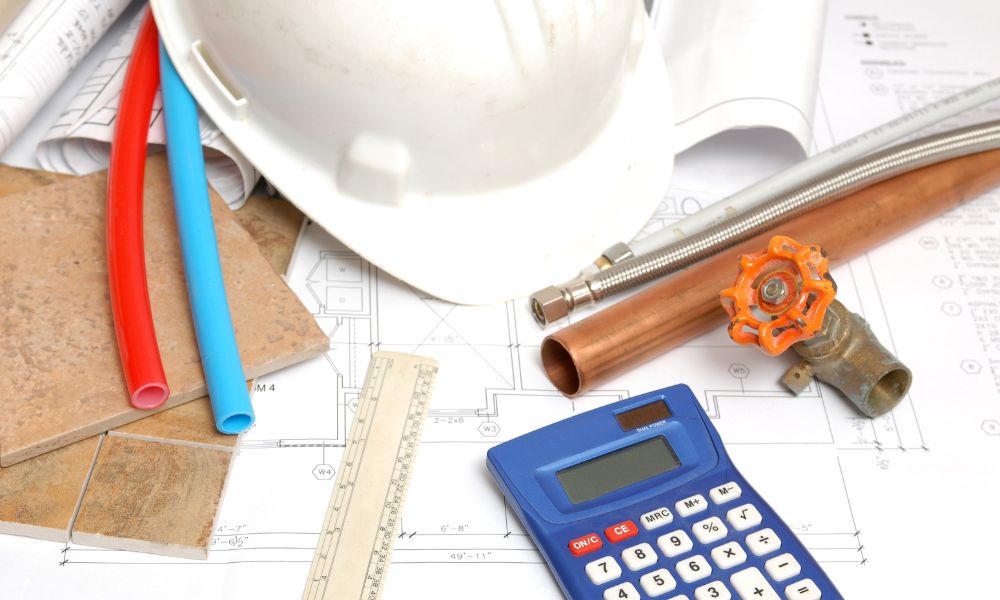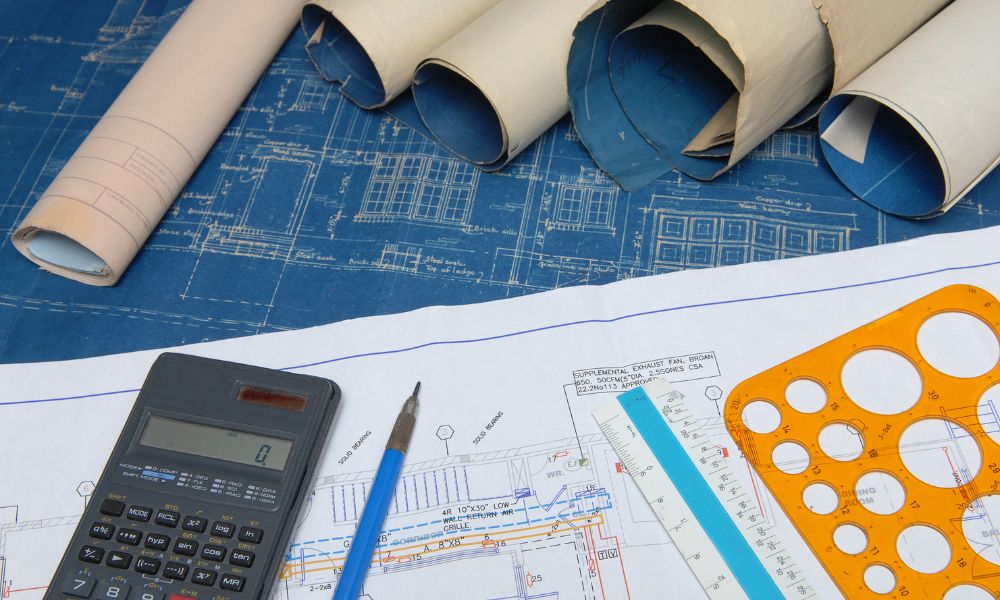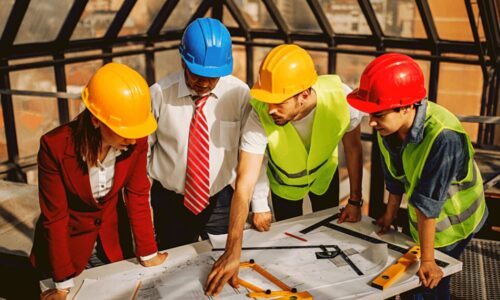Commercial construction projects are complex endeavors that involve a significant amount of planning, budgeting, and forecasting. One of the most important aspects of this process is cost estimating. A commercial construction cost estimator is responsible for predicting the financial resources required to complete a project, ensuring that it remains on budget while meeting all project specifications.
In this guide, we’ll explore the critical role a commercial cost estimator plays, the steps involved in accurate estimating, and the tools and strategies that can help streamline the process. Whether you’re an experienced contractor or a project manager, this guide will provide valuable insights into how to achieve precise and reliable cost estimates for your next commercial project.
The Role of a Commercial Construction Cost Estimator
A commercial construction cost estimator’s primary role is to assess all financial aspects of a project and ensure that resources are used efficiently. They collaborate with various stakeholders, including architects, engineers, and contractors, to review project plans and specifications in detail. By identifying the exact materials, labor, and equipment required, estimators help to mitigate risks, avoid budget overruns, and ensure the project progresses as smoothly as possible.
Key Responsibilities Include:
- Evaluating project plans, blueprints, and technical documents.
- Collaborating with suppliers and subcontractors to obtain pricing data.
- Forecasting potential risks and cost variances.
- Preparing detailed cost breakdowns for materials, labor, and equipment.
- Assisting in the preparation of bids for large commercial projects.
By providing accurate cost assessments, commercial cost estimators play a crucial role in setting a project up for success. Their input is critical from the pre-construction phase through project completion, ensuring that all financial factors are well managed.

Steps in the Commercial Construction Cost Estimating Process
The commercial construction estimating process involves several key steps that must be completed meticulously to achieve an accurate estimate. Below is an overview of these essential stages:
Step 1: Reviewing Project Documentation
The first step is to carefully review all project documentation, including blueprints, drawings, specifications, and contracts. This helps the estimator identify the scope of work, materials required, labor needs, and other critical project elements.
Step 2: Quantity Takeoff
A detailed quantity takeoff is performed to determine the exact materials, labor, and equipment required. Estimators typically use advanced tools and software to measure the quantities of each resource, such as concrete, steel, or HVAC systems.
Step 3: Estimating Labor Costs
Estimating labor costs involves assessing the time and skill level required for each task in the project. This includes determining the number of workers, hours needed, and local wage rates. Labor costs are often one of the most challenging components of estimating, as they can fluctuate based on the project’s timeline and location.
Step 4: Estimating Material Costs
Material costs can vary depending on the market, availability, and supplier pricing. An estimator must research current material prices and factor in any potential changes that could occur during the project. This step requires close collaboration with suppliers to get accurate pricing.
Step 5: Equipment Costs
For large commercial projects, specialized equipment may be required. Estimators must account for equipment rental or purchase, operation, and maintenance costs. The efficiency and availability of equipment can significantly affect the project timeline, so this needs to be carefully calculated.
Step 6: Factoring in Overhead and Profit
Overhead includes indirect costs such as office expenses, project management, permits, and utilities. Once these costs are included, the final step is to add the desired profit margin to the estimate, ensuring the project remains financially viable for the contractor.
Why Accuracy in Commercial Construction Estimating Matters
In commercial construction, accuracy is essential. A slight miscalculation can have major consequences, leading to budget overruns, delays, and even legal disputes. Accurate estimating ensures that projects remain on track financially, allowing contractors to plan effectively and allocate resources efficiently.
Key Benefits of Accurate Estimating:
- Financial Control: Accurate estimates ensure that there are no unexpected expenses that could compromise the project.
- Resource Allocation: Knowing the precise quantity of materials and labor required allows for better resource management.
- Risk Mitigation: Identifying potential risks early helps to avoid costly surprises during construction.
- Better Client Relationships: Accurate estimates build trust with clients, leading to stronger relationships and repeat business.

Tools and Software for Commercial Construction Estimating
In today’s fast-paced commercial construction environment, technology plays a crucial role in improving estimating accuracy and efficiency. Various software solutions help estimators perform quantity takeoffs, collaborate with stakeholders, and forecast costs with precision.
Popular Tools Used by Commercial Estimators:
- Bluebeam Revu: A powerful digital tool for marking up plans and performing takeoffs.
- Kubla: Specialized in earthworks and civil projects, Kubla helps estimate cut-and-fill quantities.
- Microsoft Excel: While Excel remains a reliable tool for manual calculations, it lacks the automation of specialized estimating software.
- ProEst: A cloud-based estimating solution that allows for collaboration, real-time data updates, and enhanced reporting capabilities.
These tools allow estimators to increase productivity, reduce human error, and provide more detailed cost breakdowns. The integration of digital solutions into the estimating process has transformed the industry, making it easier for estimators to generate accurate, up-to-date estimates.
Common Challenges Faced by Commercial Estimators (And How to Overcome Them)
Despite the availability of advanced tools, commercial construction cost estimating comes with its share of challenges. Here are some of the most common hurdles and tips on how to overcome them:
- Fluctuating Material Costs: Material prices can change rapidly due to market demand or supply chain issues. Estimators should regularly monitor material prices and maintain close relationships with suppliers to stay informed about any price fluctuations.
- Labor Shortages: Skilled labor shortages can impact project timelines and costs. Estimators must consider local labor availability and adjust timelines or costs accordingly.
- Scope Changes: Changes to the project scope during construction are common and can cause cost overruns. Estimators should build contingencies into their estimates and ensure that scope changes are documented and approved by all stakeholders.
- Tight Deadlines: Commercial projects often have tight schedules, which can lead to rushed estimates. Estimators should prioritize accuracy over speed to avoid costly mistakes.
By being proactive and adaptable, commercial cost estimators can overcome these challenges and deliver reliable estimates that meet the project’s needs.
The Future of Commercial Construction Estimating
As technology continues to evolve, so too will the role of commercial construction cost estimators. Artificial intelligence (AI) and machine learning are beginning to influence the industry by improving data analysis and cost forecasting. These technologies can process vast amounts of information, identify trends, and predict potential risks with greater accuracy than traditional methods.
In addition, sustainability is becoming a critical factor in construction estimating. As green building practices and eco-friendly materials gain popularity, estimators will need to consider the environmental impact of their projects and factor in the cost of sustainable alternatives.
Emerging Trends:
- AI-Powered Estimating Tools: AI will automate many estimating tasks, reducing the time it takes to generate cost forecasts.
- Sustainability Considerations: Estimators will need to incorporate green building materials and techniques into their estimates to meet growing client demand.
- Cloud-Based Collaboration: Estimators will increasingly rely on cloud-based platforms for real-time collaboration with stakeholders, improving communication and transparency throughout the project.
Why Professional Estimating is Key to Successful Commercial Projects
In commercial construction, a precise and detailed cost estimate is essential to the success of any project. Commercial cost estimators play a vital role in ensuring that financial resources are allocated properly and that projects remain within budget. With the right tools, processes, and strategies in place, estimators can deliver accurate estimates that help projects run smoothly from start to finish.
If you’re planning a commercial construction project, contact Measure Manage for expert estimating services that will keep your project on track and within budget.




